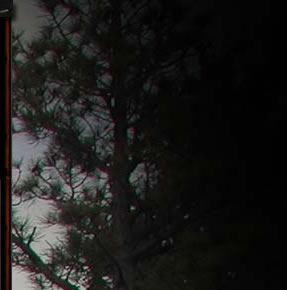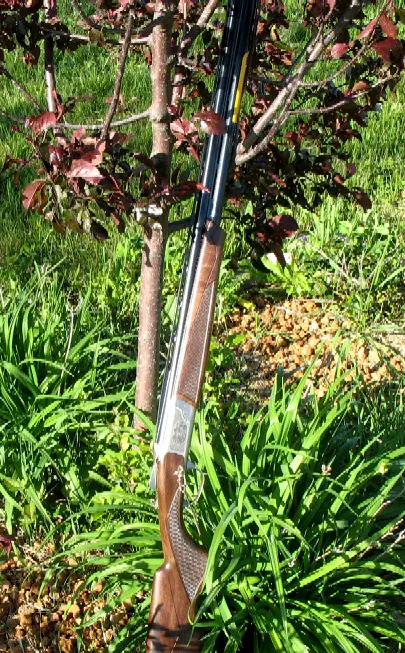


Review: 2010 Browning Cynergy Field Twenty Gauge O/U

The Browning Cynergy line of vertical doubles has been with us now for six years, first released in 2004. The “Sheik Project” was headed up by lead designer Dwight Potter, officially commencing in 1997 after years of preliminary discussions. It was and is a revolutionary design, a design that provides the lowest-profile stackbarrel action ever offered. Shotgunners can be a fickle lot; at one time the O/U was considered a contraptionary oddity. At the 1938 National Skeet Championships, according to Bob Nichols, 67.1 percent of the shooters used autoloaders, 18.1 percent used pumps, and 10.6 percent used side-by-sides. O/U's accounted for 4.2 percent of the shooters.
Times have changed, of course. As far as I know, the most successful modern-day O/U remains the Browning Citori, introduced in 1973. In 2008, Browning celebrated the one millionth Citori to be built. It has been the most popular vertical double on the market offered in a dizzying array of stock, finish, and gauge configurations. For many folks, the Citori defines what an O/U is and that doesn't seem likely to change anytime soon. While one million may not seem stratospheric in context of the numbers casually tossed around by “stimulus” packages and bailouts as of late, it is quite an accomplishment considering Beretta reportedly makes 40,000 O/Us a year, with many smaller makers not exceeding 8,000 units per year.
Right now, there is a glut of O/U shotguns on the market. A tremendous glut. The Remington Spartans have been discontinued as have various Fausti Stefano guns relabeled as L.C. Smith by Marlin, sold by Traditions, sold by Weatherby, Sabatti relabeled as Remington, Huglo branded as CZ, and SKB has ceased manufacturing. The F.A.I.R. Rizzini's once sold as Veronas are no more, the Savage Milano F.A.I.R. models have been discontinued, and SigArms has offered Battista Rizzini shotguns in two different roll-outs and thrown in the towel both times. Charles Daly (K.B.I) has recently gone out of business. For whatever panic-buying there was in the black rifle market, the O/U market has experienced far more supply than demand.
The Citori line, made by Miroku of Japan, has been a solid buy for over thirty-five years. Though Herstal Group, the parent company that owns the Browning brand, manufactures in the United States, Belgium, Portugal, and Japan, the Japanese made sporting guns have been of uniform quality for as long as I can remember. Having owned many, many Citori's the primary gripe is the weight. Despite their relatively heavy weight, they also tend to kick-- not as bad as the older, lighter Winchester 101 field guns that are among the most effective shoulder-benders, but Citori's have never been the softest shooters in my experience.
Many have mused about what shooting advantage an O/U has, if any, compared to side-by-sides and slide actions. Not everyone agrees, but I think the late, great Don Zutz had it right: a quick second shot. A properly fitted O/U with a reasonable load that causes no great amount of muzzle flip or shoulder-jolting is extremely fast on the second bird. The reason is the in-line recoil pulse of the lower barrel. As long as stocks are placed beneath shotguns, they are going to recoil up eventually. The lower the first barrel is set in the action, the less muzzle flip there will be.
That is the impetus for low-profile actions, with the barrels set as low as possible, and the fundamental reason for the Cynergy design. To achieve the goal of setting the barrels so low, the monolock hinge system was employed. The massive Inflex recoil pad was developed by Pachmayr for Browning. What the result has been is the most comfortable to shoot O/U in its weight bracket I've ever tested. This 20 gauge is the fourth Cynergy I've reviewed of late. In a general sense, the Cynergy loses about a half-pound of weight compared to a comparable Citori, yet is markedly more comfortable to shoot.
Therein lies the appeal of the Cynergy, the O/U that many have found to be the only O/U truly comfortable to shoot with peppy hunting loads that is also pleasant to carry in the field. This 20 gauge Cynergy Field as supplied with chokes installed weighs right at 6-1/2 pounds, a full half-pound over its cataloged weight.
The lower barrel trigger breaks at 5 lbs. 14 oz., the upper barrel at 6 lbs. 6 oz. In the grand tradition of current Browning shotgun triggers, they are too heavy. As is common with Browning shotguns as well, the trigger face is extremely wide which helps mitigate the excessive break weight. After a small amount of free travel, they break crisply and cleanly but are clearly heavier than ideal. According to Browning, trigger "spec" is 4 - 5 pounds on this Cynergy. Browning at Arnold, Missouri, will happily touch up Cynergy triggers for you if you feel it necessary to within their stated parameters. If you want lighter than Browning's spec, you'll have to see a gunsmith.
Browning adds a center bead on the Cynergy rib, a “feature” that I generally loathe on a field gun. Though pointless, at least the Browning mid-bead is in the form of a very small, white, half-dome that does not obscure the white front bead, but blends into it. So, although it is a nonsensical feature, it does not obliterate the front bead as horribly as some do. Sadly, though, there is no easy way to remove it that I can see otherwise I'd have it in the garbage can already.
Browning does do a very good job with their tang safety, giving enough rise in the center so it is easy to get off quickly even with gloved hands. This is in stark contrast to any number of vile, low-profile Beretta type safeties that have had the unfortunate effect of saving the lives of evil communist chinese ring-necked pheasants more than anything else. The Cynergy trigger is considered a mechanical trigger that will cycle through a dead round without having to be set by recoil, though there is an inertia block included as part of the assembly to prevent doubling.
The nominal dimensions are unchanged from the tested 2009 “Euro Field,” so I won't repeat them here. Like last year's model, a quarter inch stock spacer in included to increase the length of pull if you choose. On last year's model, I did just that. On this individual gun, it wasn't necessary. The MSRP is $2659, and the popular “Cynergy Club” promotion continues as before.
So what's new on the “Field” versus the 2009 “Euro Field”? The primary difference is the addition of the longer, Vector Pro forcing cones. While the Euro Field's upgraded wood really wasn't to my eyes, in the case of this year's Field is does have character, is more lightly stained, and is more attractive than standard Grade I wood. The game scene engraving appears to be improved as well, having a much more vivid, heavily inked appearance. Overall, it is a clear notch better than last year's model in wood, engraving, and overall appearance.
I measured both barrels at .626 in. with a Skeets bore gauge. The Browning standard twenty gauge barrel bore is listed at .617 in., so the nine thousandths larger bore of the Cynergy is what you get as “Invector Plus Back-bored Barrels.” Whether this is a truly meaningful change from standard 20 gauge dimensions is questionable. The consistency in bore diameter from barrel to barrel is good to see as it doesn't happen all that much in some brands of doubles.
At the range, the Cynergy proved its mettle as fast-shouldering, smooth-swinging, and extremely soft shooting. Functionality, with the exception of the overly-heavy triggers, was flawless. At this price bracket, there are a lot of choices in the O/U market. There are none that are as soft-shooting by weight, though, which remains the greatest appeal of the Inflex-equipped Cynergy stackbarrels. Several shooters have remarked that the Cynergy is the only truly comfortable O/U field gun they have ever fired. If you find O/U field shotguns to be generally unpleasant to shoot, the Cynergy may be a welcomed change for you.
Copyright 2010 by Randy Wakeman. All Rights Reserved.

Custom Search



